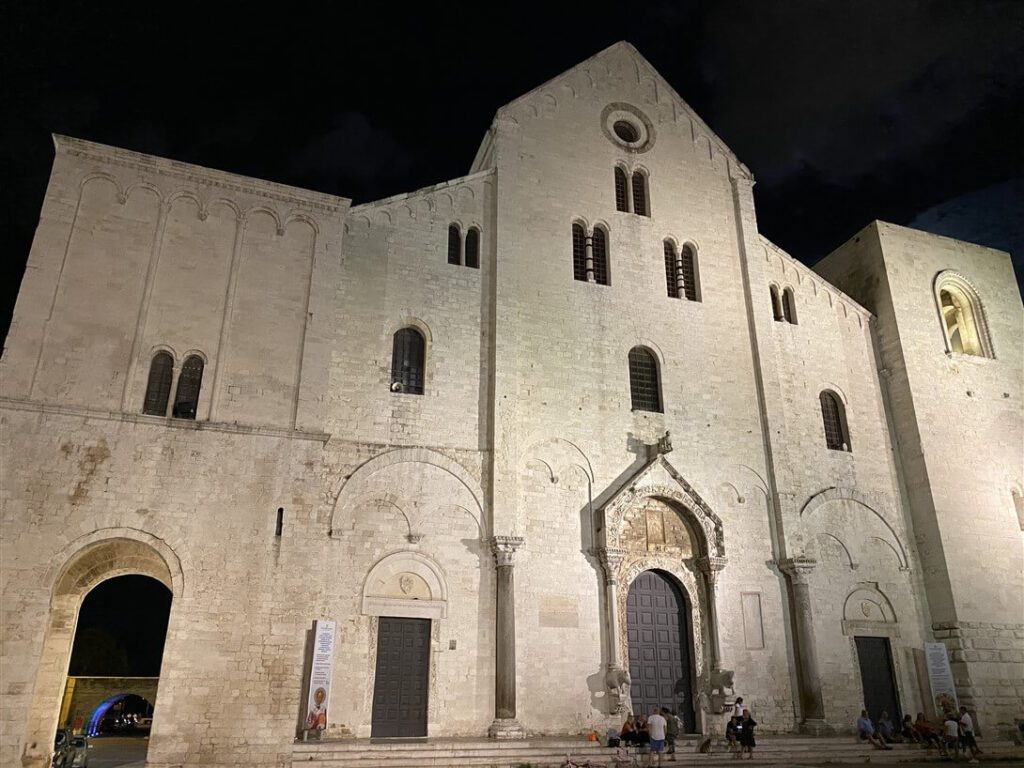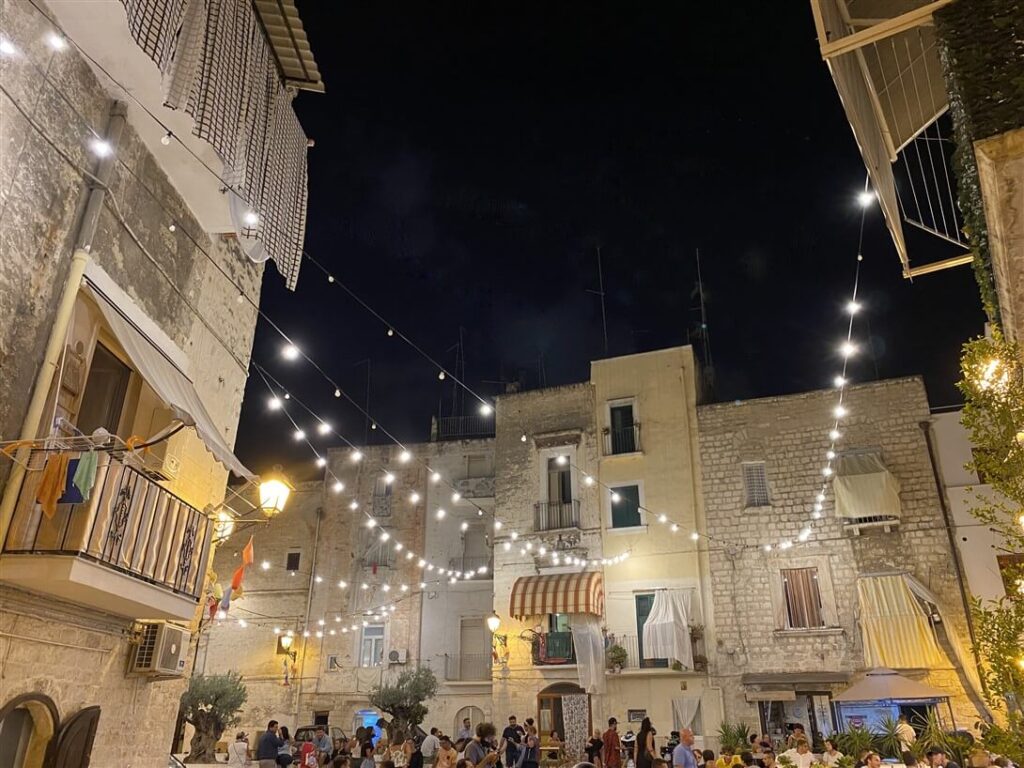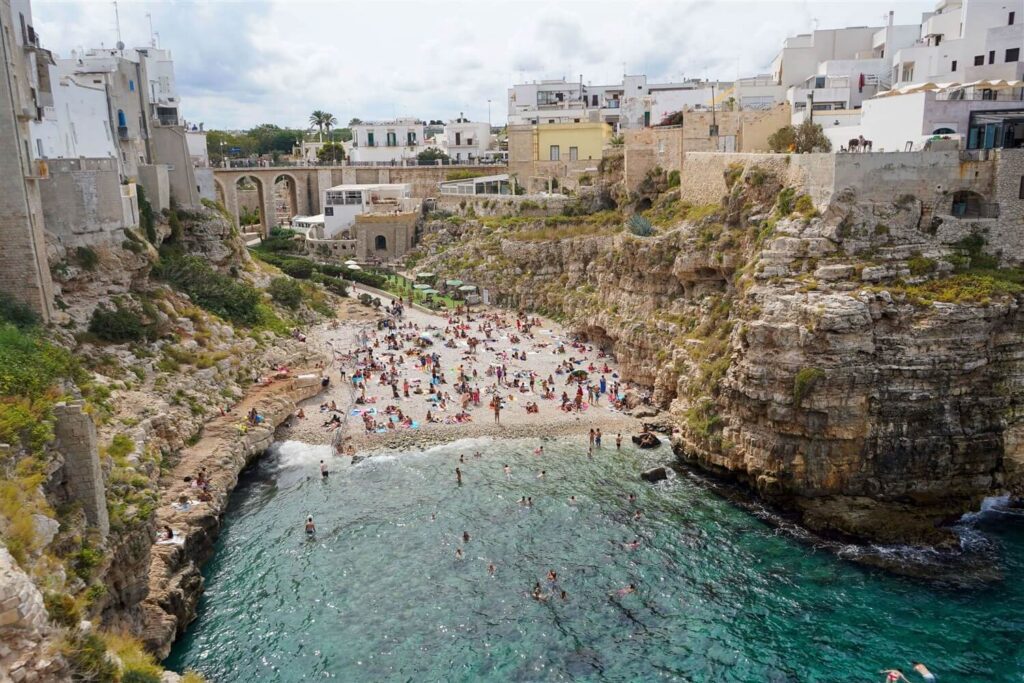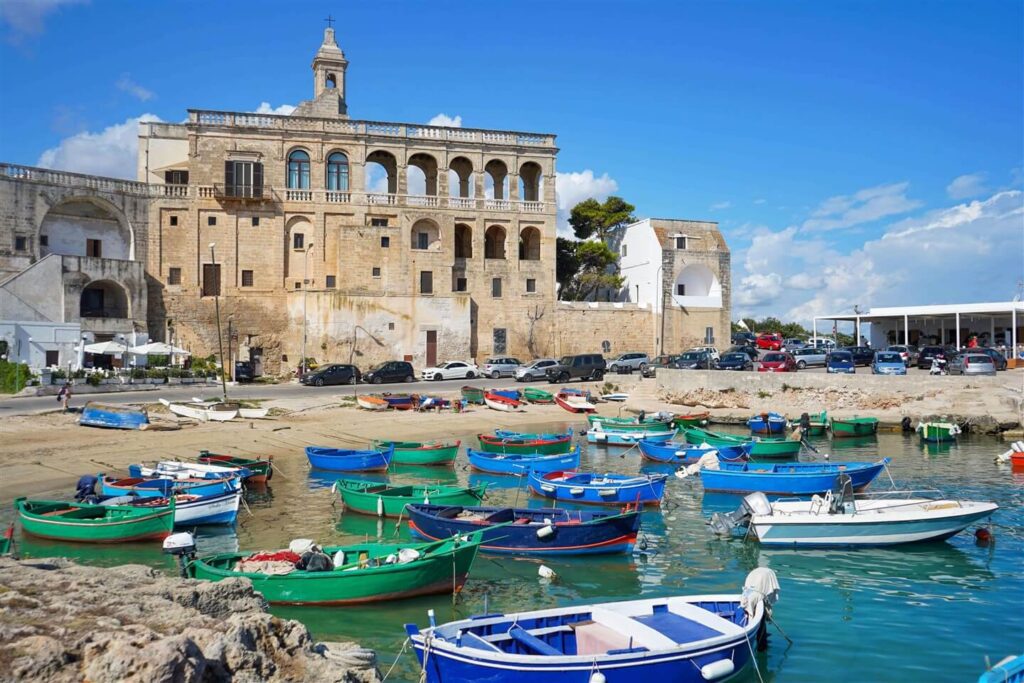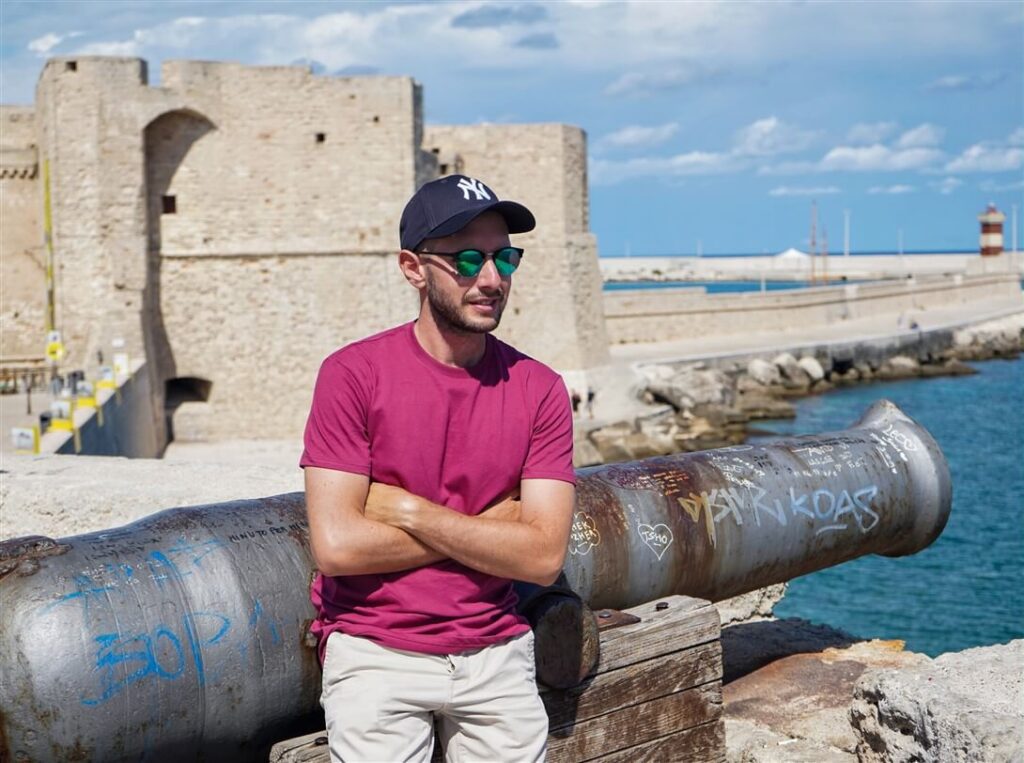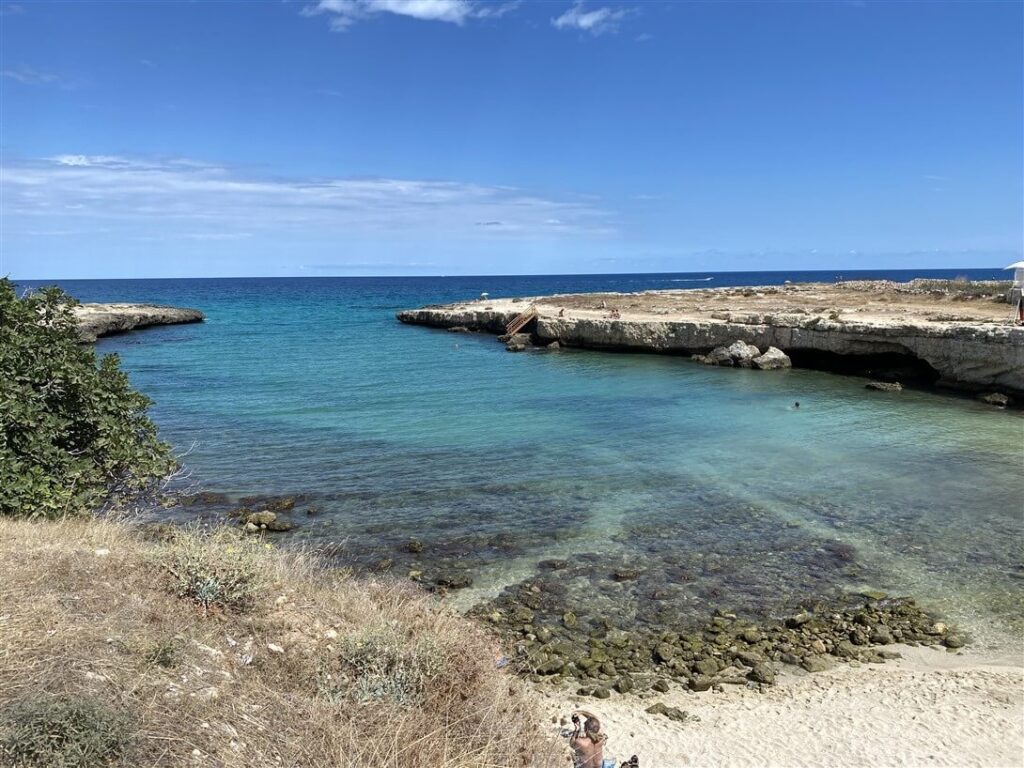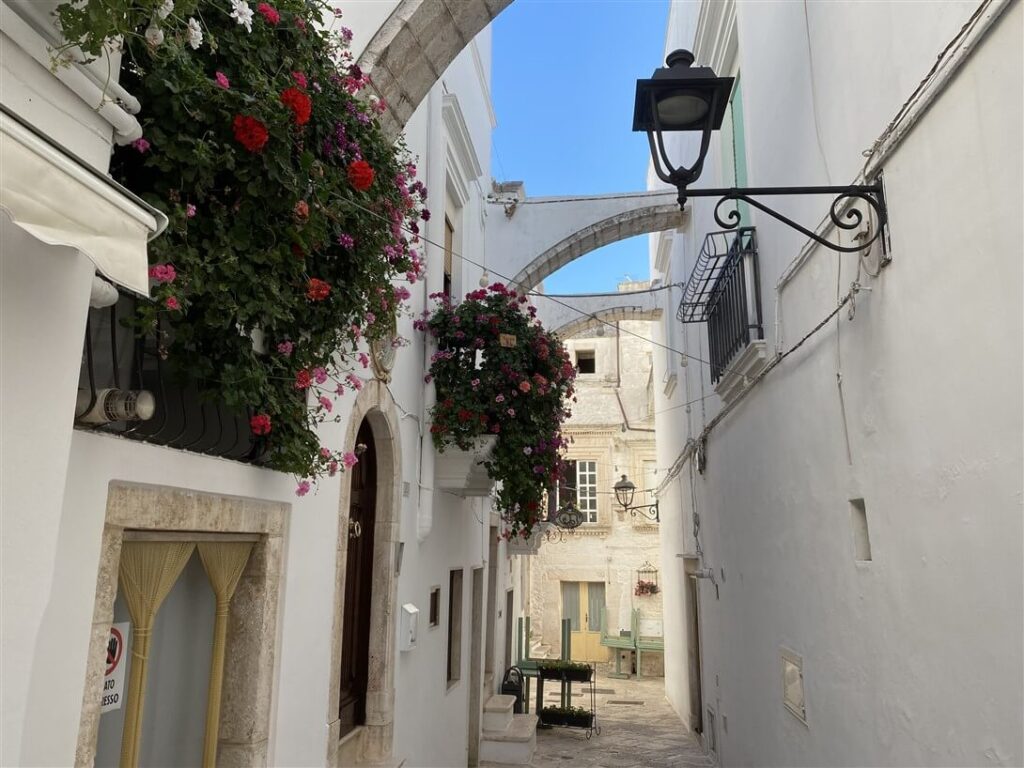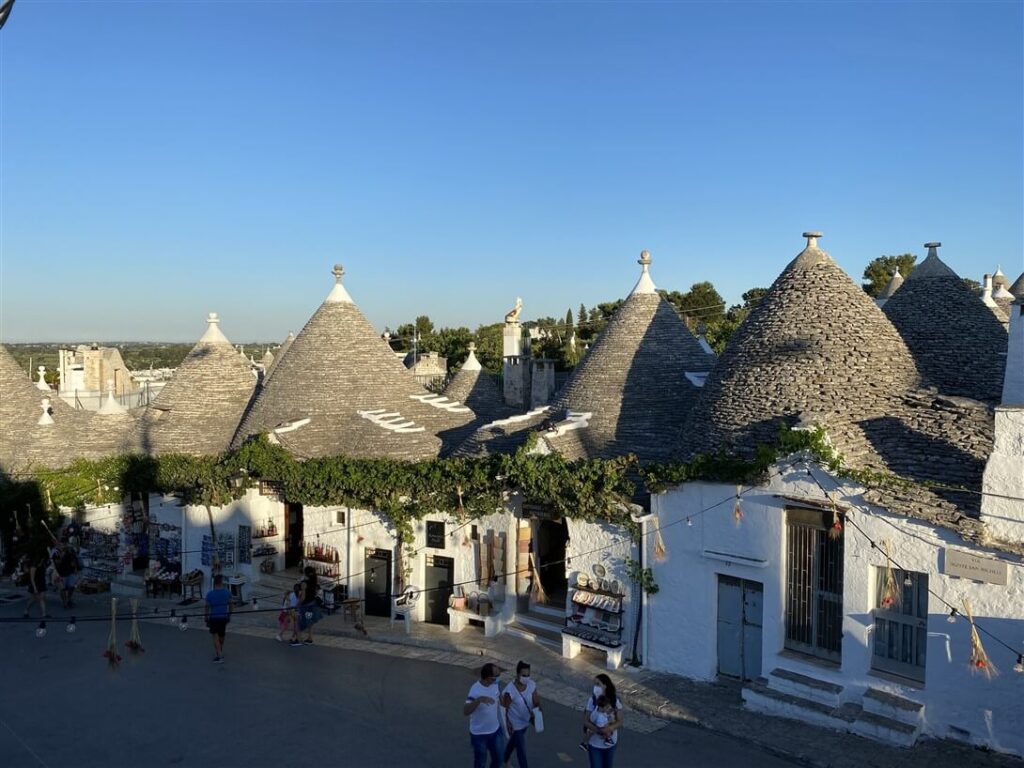
When summer strikes, many people ask me for suggestions for travel itineraries in Italy and around the world. In addition to Sicily and Campania, one of Italy’s most popular regions is definitely Puglia, or Apulia if you prefer, with a really wide range of tourist options. Today I suggest an 8-day itinerary in Apulia with numerous stops, including: Bari, Polignano, Monopoli, Alberobello, Locorotondo and Ostuni.
The premise is that the only way to fully enjoy this 8-day itinerary in Apulia is to do it by car. So if you are without one, you will be better off renting one in Bari. I picked it up at Bari airport but there are rentals in the city center as well.
8-day itinerary in Apulia including Bari, Polignano and Ostuni
Here are the stops of my 8-day itinerary in Apulia:
- Bari
- Polignano a Mare
- Monopoli
- Ceglie Messapica
- Matera (in Basilicata)
- Locorotondo
- Alberobello
- Ostuni
The first stop is Bari, which, however, I could only appreciate in the evening. It is a city of great charm, with a well-kept historic center that offers scenes of daily life such as three old ladies busy preparing orecchiette and cavatelli. Of course in the evening the monuments are all closed but I can still appreciate their well-lit exteriors. Above all, the imposing 12th-century Cathedral of San Sabino and the Basilica of San Nicola, built in the Romanesque style between 1087 and 1197, capture my attention. Between a stroll along the Nazario Sauro waterfront and a stop in the quaint Largo Albicocca, known as the lovers’ square, it’s dinnertime. At the suggestion of a Barese doc friend, I choose to stop at “La Uascezze,” which serves traditional Bari dishes, where I finally taste the legendary focaccia and their specialty: potatoes, rice and mussels. A real delicacy!
Polignano a Mare
About a 40-minute drive from Bari is Polignano a Mare, one of the coolest destinations in all Apulia. Famous for being the birthplace of Domenico Modugno, Polignano is a little treasure on the Adriatic, suspended between dizzying cliffs and narrow alleys set among blindingly white buildings. The most famous place in this small town is definitely the Lama Monachile, the pebble beach set among the cliffs, captured in the pictures and videos of millions of people from all over the world. A privileged vantage point is the Santo Stefano Terrace on Porto Street, from which you will have a truly breathtaking view of the beach. The alleys of the historic center represent the true heart of Polignano a Mare, a journey through the various cultures that have succeeded one another over the centuries in this land. Romans, Arabs, Byzantines, Spaniards and Normans have left traces of their presence in the squares, ancient churches and historic buildings.
A ten-minute drive from Polignano, then, is San Vito, an ancient fishing village whose backdrop is the beautiful Benedictine Abbey, dating back to the 10th century.
Monopoli
Monopoli has become increasingly well-known among the general public, such that today it is considered a must-see stop on a stay in Apulia. The starting point of a visit to Monopoli is definitely the Porto Vecchio, with its blue boats that blend in with the sea and the surrounding architecture that harks back to past dominations. Just beyond the ancient walls is the castle of Charles V, dating back to the 1500s. From the castle starts a promenade built on the ancient city walls, with small restaurants and really characteristic buildings. It is really a pleasure to walk through these streets, freshened by a light sea breeze. Don’t miss the Cathedral of Monopoli, dedicated to the Virgin of the Madia, dating back to 1742.
If you are in Monopoli and feel like taking a dip in the sea, there are several coves that can be found along the coast. The first I suggest is Cala Vecchia, a sandy beach located just beyond the walls of the historic center, and Cala Susca, a pleasant pebble beach 10 minutes’ drive from the center.
Sleeping in a trullo in Ceglie Messapica
In this 8-day itinerary in Apulia, one of the most characteristic experiences could not be missing: sleeping in a trullo. I stayed at Trullo Santangelo, a small corner of paradise not far from Ceglie Messapica in the Itria Valley. Trullo Santangelo is a nine-cone trulli complex with a long history behind it that has its roots in the 18th century. Staying here will allow you to take a break from the hustle and bustle of such a busy on-the-road trip and enjoy some well-deserved relaxation. I still vividly remember that peaceful feeling of having breakfast outside in the shade of the ancient mulberry tree and then taking a dip in the pool surrounded by centuries-old olive trees and lavender bushes. Then, if you have time, treat yourself to a walk in the small village of Ceglie Messapica. It will be a real surprise!
8-day itinerary in Apulia: Locorotondo e Alberobello
After spending a morning by the pool sipping a drink and reading a good book, we dedicate the afternoon to visiting Alberobello but first we decide to make a deviation to Locorotondo.
Locorotondo is a very pleasant village in the Itria Valley that is characterized by the peculiar circular plan from which it derives precisely its name. Among balconies filled with flowers, narrow cobblestone streets, ancient stone arches and the classic deep-white buildings, you will feel like you are walking in a fairy-tale place. It is no coincidence that it has been listed among the most beautiful villages in Italy.
Alberobello is renowned worldwide as the city of trulli. A small, hilltop town made up entirely of trulli, ancient stone dwellings, some of which date as far back as the 14th century. Trulli of all kinds can be observed. Among the best known, there are the Siamese trulli characterized by the fact that they are united on top but with entrances positioned on different roads. The majority of the trulli we can see today house stores and craft stores, hotels and restaurants. Almost no one lives in trulli in Alberobello anymore. If you have never been there, you cannot miss a visit to Alberobello even if it is overly touristy.
Ostuni
The last stop on this 8-day itinerary in Apulia is Ostuni, the white city. The best way to discover it is to get lost in the alleys of the old town, a maze of narrow streets nestled between deep white buildings. Ostuni can be visited in an afternoon and some stops are a must, such as: the Blue Door, considered the symbol of the city, and the Cathedral, built between 1469 and 1495 and characterized by stone architecture that, thanks to the contrast with the intense white of the houses, makes it visible from miles away. Impressive is the large central rose window, considered by some to be the most beautiful in all of Apulia. If you can’t give up the beach, then you have as much as 17 km of coastline at your leisure, separated from the city only by an expanse of centuries-old olive trees. Among the most famous seaside destinations, I recall Torre Guaceto and the nearest Torre Pozzelle.
Cooking Class during an Apulia Itinerary
On this 8-day on-the-road trip to Apulia I didn’t miss a thing, and as icing on the cake I literally got my hands dirty with an engaging food experience thanks to which I learned how to prepare typical Apulian dishes, from the legendary focaccia, declined in the most varied flavors, to the various types of fresh pasta. A way to get even more in touch with local realities and learn about the customs and traditions of a people.

